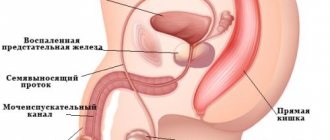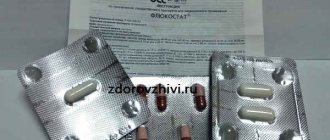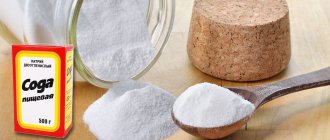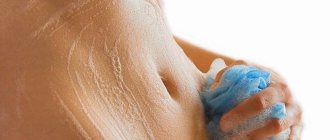Thrush is a problem that every woman can face. The disease is characterized by a number of symptoms, which include an unpleasant odor, discharge and severe itching. Urination with thrush may be frequent. Many women note that during the treatment of the disease there is often a desire to visit the toilet. However, it is worth noting that the frequent urge to empty the bladder itself is not characteristic of candidiasis - this is the scientific name for thrush.
Causes of frequent urination
The question that most patients of urologists ask is the question of the connection between thrush and frequent urination. Multiple urges to go to the toilet are not so much caused by the disease as they are a consequence of it. The fact is that fungi of the genus Candida, which cause the development of the disease against the background of reduced immunity, provoke an imbalance in the acid balance. As a result, burning and itching appear, and bladder urethritis occurs.
A weakened body loses its ability to resist various infections. This causes thrush in women. The disease is also caused by long-term use of antibacterial drugs, which destroy both harmful and beneficial microflora in the body.
Candidiasis is transmitted during sexual intercourse. This means that the lack of protection can also cause the development of thrush and, consequently, increased urination. Since the first stages of the disease are asymptomatic, the likelihood of infecting a sexual partner increases significantly.
Other causes of pain
Pain from thrush may appear during intercourse. Therefore, doctors prohibit having sex during treatment. But not all women adhere to this.
During the disease, the vaginal mucosa becomes very inflamed, so it becomes sensitive to every touch. During the period of exacerbation, ulcers appear on her; touching them, the woman experiences acute pain.
Because of this, the mucous membrane ceases to secrete a sufficient amount of the substance necessary for sexual intercourse. All movements are accompanied by pain, cracks form in the perineum, and pain occurs in the lower abdomen. After a certain time, the pain subsides, but the inflammation does not go away completely, it can start again.
If the painful sensation is of a pulling nature, and it seems to encircle, then this may indicate that the woman is developing candidiasis. To find out the exact cause of this disease, you should consult a doctor. Because the pain may be caused by another disease, not candidiasis.
Diseases such as:
- Endometritis (infectious disease of the inner lining of the uterus).
- Polycystic disease (a disease of the endocrine system due to hormonal imbalance).
- Erosion (formation of ulcers on the mucous tissue of the cervix).
Pain may appear due to gallstones, pyelonephritis, inflammation in the ovaries and appendages. Very often, pain in the kidneys is diagnosed, and all because of hypothermia, as a result of which immunity drops sharply, and thrush appears. Therefore, pain may appear with thrush.
The appearance of pain is affected by a cyst in the appendages, adhesions of internal organs located in the pelvis, and various infectious diseases.
Candidiasis is easily transmitted to a sexual partner, so try not to have sexual intercourse while you are ill.
Main symptoms
Frequent urination and cystitis, caused by a fungus, have the following symptoms:
- cloudy urine;
- rapid rate of urine accumulation;
- large portions when urinating;
- increased urination due to candidiasis;
- false urge to empty the bladder;
- pain in the upper pubic area;
- severe itching;
- pain when urinating.
It is worth keeping in mind that urethritis in women can be associated with diseases such as gonorrhea or chlamydia. They require immediate treatment, just like thrush, but the therapeutic measures must be taken somewhat differently.
As the disease progresses, discomfort in the lower abdomen can either weaken or intensify. If temporary relief occurs and there is no pain or burning during urination, then you should not rejoice. Most likely, bladder urethritis becomes chronic, and subsequent disposal of it will pose an even greater problem. Lack of therapy will lead to damage to nearby organs and the development of other concomitant diseases, such as urinary incontinence.
Diagnosis and causes of such manifestations
Frequent urination requires an immediate visit to the gynecologist. The doctor must determine a preliminary diagnosis, and after examination, confirm or refute it.
Common analyzes include:
- donating blood to detect infections;
- donating urine;
- ultrasonography;
- smear.
After receiving the results of the examination, the specialist identifies the reasons due to which these manifestations arose.
There can be many of them, but the most common are:
- painful sensations in the lower abdomen with a yellow discharge characterizes the occurrence of Trichomonas or gonococci;
- tingling – in this case, thrush appears as a result of infection entering the bladder;
- Urethritis and cystitis have similar manifestations. They mainly appear at night.
The list of necessary diagnostic measures can continue to identify the exact cause of the disease. However, such activities should be conducted in a health care setting and not online. Only proper examination and timely treatment will help eliminate the problem.
Diagnostics
If there are signs of a burning sensation during the process of urine excretion due to thrush, you should immediately consult a doctor. The methods used in diagnosis are as follows:
- oral interview with the patient;
- determining the presence of discharge and the presence of an unpleasant odor;
- establishing the timing of the onset of unpleasant sensations;
- diagnosis of manifestations of candidiasis;
- Analysis of urine;
- bladder diagnosis;
- examination on a gynecological chair;
- a smear to determine the type of infectious agent;
- blood test to determine the level of sex hormones.
Only after all the necessary studies have been carried out will the doctor be able to decide on treatment tactics.
Bladder candidiasis: pain and burning when urinating
Thrush of the bladder can develop for many reasons. Colonies of fungi affect the mucous membrane during hypothermia, hormonal disorders, stress, after antibiotics or drugs with hormones. The disease affects weakened patients and people suffering from diabetes. Candida often ends up in the bladder due to poor treatment of the genital tract.
Due to anatomical features, women develop candidal cystitis more often. Their short urinary canal is not a reliable barrier to the penetration of candida into the bladder cavity and any factor is sufficient to cause fungal growth. Transitioning into a chronic form, the disease manifests itself with periods of exacerbation. Very rarely, thrush affects only the bladder. As a rule, the disease appears when the intestines or other organs are affected.
Symptoms of the disease
If thrush worsens in patients, a burning sensation when urinating appears as one of the first warning signs. Often urinary tract candidiasis is accompanied by candiduria. The presence of fungal pathogens indicates infection of the lower urinary system, cystitis, or an acute form of the disease with kidney damage. In 80% of cases, urinary candidiasis can develop after urine is removed by a catheter. Infection from the mucous membranes of the genital organs or perineum can enter the urinary tract through an ascending route.
Bladder thrush in its clinical symptoms is practically no different from cystitis caused by bacteria. The patient urinates frequently. Patients often complain of pain and heaviness in the suprapubic area. Frequent urination with thrush is accompanied by a burning sensation and a feeling of an unemptied bladder. Urine with candidiasis of the bladder is cloudy with an admixture of blood in an acute process. Often there is a sour, unpleasant smell of urine with thrush. In the acute form of the disease, the temperature rises, weakness, headache, and irritability appear due to frequent painful urge to urinate.
Diagnosis and treatment
To determine the presence of this disease, one survey is not enough. Since with thrush, pain during urination may be similar to the symptoms of other pathologies of the urinary tract. In order for the therapy to be effective, several cultures are performed. If the results indicate the presence of Candida fungi and there are clear signs of inflammation, treatment is prescribed.
An important condition in the treatment of bladder candidiasis is the elimination of fungal growth factors. If the patient has a urinary catheter, it must be replaced or removed. The use of antifungal agents is necessary only when symptoms of the disease are present or there is a significant risk of developing candidiasis. Patients are prescribed drugs for thrush (Flucanazole, Futsis, etc.) and urinary lavage with the active drug Amphotericin. These measures can stop candiduria (fungal pathogens in the urine). But if the overlying parts are affected, this method of treatment is not effective. Nystatin and Levorin are not used in the treatment of urinary tract candidiasis, since they do not pass into the urine.
Symptoms and treatment of candidiasis of the bladder and urinary tract. In patients with impaired urine excretion, a complication may develop - candidal purulent inflammation of the renal pelvis. Acute kidney injury usually occurs in patients with many risk factors (catheterization, diarrhea, prescription of antibiotics, hormones, drugs that reduce immunity, abdominal surgery). If the patient does not show signs of candidiasis, then disseminated thrush develops very rarely.
Treatment and prevention
Treatment of frequent urination is impossible without eliminating the cause. This means that first of all the underlying disease – thrush – should be eliminated. The course of treatment must be completed not only by the woman, but also by her sexual partner. Otherwise, therapy may be ineffective.
If the burning sensation during urination is accompanied by inflammation, then therapy should be accompanied by the use of antibacterial drugs - antibiotics. After 5-7 days, pain when urinating will begin to subside. Treatment proceeds faster if you exclude spicy, fatty and fried foods from your diet during this time.
If burning after urination becomes a psychological problem, then therapy should be accompanied by sedatives and antidepressants. A large amount of liquid will also be useful - at least 2 liters of water during the day. The consumption of alcoholic beverages during this period should be limited or completely eliminated.
Traditional medicine methods will help ease urination during thrush. A very effective measure is using a decoction of oak bark for douching. For 500 milliliters of clean drinking water you will need 2 tablespoons of crushed bark. The broth should be cooked for half an hour. Manipulations should be carried out for one week, after which a break should be taken.
Measures aimed at preventing the development of thrush and discomfort in the urethra are quite simple and effective. It is necessary to carefully observe personal hygiene and avoid severe hypothermia. Taking a shower or bath should occur at least once a day, and changing pads and tampons during menstruation - at least once every 4 hours.
Treatment of frequent urination and thrush
When treating thrush, which causes inflammation in the bladder or urethra, the problem is the need to use antibiotics. They are effective in combating bacterial infection, but have a detrimental effect on the microflora of the mucous membrane, aggravating the course of candidiasis.
To prevent possible complications, the doctor follows generally accepted rules:
- First comes the focus on fighting fungal infection.
- Antibiotics are prescribed exclusively with a narrow spectrum of action.
- The drug therapy regimen is complemented by folk remedies and herbal preparations to relieve inflammation and remove excess moisture from the body.
During treatment, you need to give up bad habits, adjust your diet and maintain a drinking regime. To increase the effectiveness of therapy and strengthen the body’s natural defenses, it is recommended to additionally take a course of immunomodulators and vitamins.
Medicines
Medicines are prescribed by the attending physician based on the results of instrumental and laboratory diagnostics. The course of treatment for thrush and urethritis or cystitis will necessarily include antibiotics, antifungals and other drugs that help relieve symptoms and overcome pathogenic microflora. The list of drug names can be seen in the table:
| Group | Representatives |
| Antifungal agents | • "Nystatin"; • "Clotrimazole"; • "Mikomax". |
| Narrow-spectrum antibiotics | • "Furamag"; • "Nitroxoline"; • "Palin". |
| Uroantiseptics | • "Cyston"; • "Canephron"; • "Biseptol". |
| Antiseptic solutions for douching | • “Furacilin; • "Miramistin"; • "Chlorhexidine". |
| Vitamin complexes | • "Orthomol Immun"; • ". |
| Immunomodulators | • "Longidaza"; • "Polyodine"; • "Viferon". |
| Probiotics | • "Acilact"; • "Vagilak"; • "Gynoflor". |
The drugs are used in the form of tablets, suppositories and douching solutions. On average, treatment lasts 2 weeks. Then a follow-up examination is carried out to check the effectiveness of the therapy.
Folk recipes
Traditional medicine methods are valued for their low likelihood of side effects and accessibility. The effect is due to time-tested recipes and natural ingredients. When treating thrush accompanied by frequent urination, the following treatment options are relevant:
- Treatment of the genitals with soda solution.
- Using the “red boots” technique. The term refers to warming the feet in a bath until the skin turns red.
- Taking lingonberry leaf infusion.
- Warming the genitals over boiled and mashed potatoes.
- Douching with decoctions of chamomile, calendula, oak bark and other components with an anti-inflammatory effect.
Before using traditional methods, it is better to consult a doctor. If the pain below the abdomen becomes more severe, the urge to go to the toilet becomes more frequent, or an allergic reaction occurs, treatment should be immediately stopped and you should go to the hospital.
Concept of frequent urination
In most cases of increased diuresis, infection with fungi and bacteria acts as a provocateur.
Due to the specific anatomical structure, candidiasis is more often diagnosed in women than in men. Regardless of the gender of the patient, frequent urination with thrush has similar symptoms. Based on medical practice, most patients with urological pathologies seek medical help at the stage of serious complications. There are often situations when frequent urination is caused by physiological processes in the body. It is extremely important to understand the concept of increased diuresis in order to understand what symptoms you should be wary of.
In medicine, there is no strict definition of the daily frequency of emptying the bladder, since this is an individual process. However, there is an average value - 2-6 urinations in one day. In the absence of urological pathologies, the natural secretion of urine is controlled by the following factors:
- Physiological characteristics of the body.
- Dietary regime.
- Drinking regime.
- The speed of metabolic processes.
Increased diuresis at night or during the day is a violation of the personal comfort of a man or woman, when there is a need to visit the toilet more often than usual. Doctors emphasize that short-term manifestations of frequent urination for 2-3 days are acceptable and should not cause alarm. In other situations, when symptoms worsen, immediate consultation with a qualified specialist is required.
The relationship between urological pathology and frequent urge to defecate
The most popular question that urological patients ask themselves is whether thrush can cause frequent urination. Candidiasis affects the mucous membranes of the vagina in women and provokes an imbalance of acid balance. As a result, patients complain of discomfort in the form of pain, burning, and increased diuresis. These factors explain the close relationship between thrush and frequent urination.
It is a mistake to assume that this disease affects exclusively the female genitourinary system. The male body is indeed more resistant to the negative effects of yeast-like fungi Candida, but against the background of reduced immunity there is a high probability of infection of the genital organs.
Doctors emphasize that thrush is provoked by various infectious and inflammatory diseases, among which cystitis and urethritis occupy leading positions. Infection of the walls of the bladder can occur during sexual intercourse, with hypothermia of the pelvic organs, or with prolonged use of potent antibiotics.
As for urethritis, this pathology is characterized by damage to the urethra against the background of active biosynthesis of viruses and bacteria. This form of inflammation, like candidiasis, is transmitted during sexual intercourse. The danger of the disease lies in the fact that there are often situations when there are no pronounced symptoms. As a result, the patient does not suspect the presence of infection and continues to infect sexual partners. Candidal urethritis can also occur when pathogenic microflora enters from any other lesion.
Can thrush (candidiasis) occur in men?
Have you been fighting thrush for many years without success?
Head of the Institute: “You will be amazed at how easy it is to cure thrush by taking it every day...
Read more "
It is believed that thrush in the male half of the population is a rarer phenomenon than this disease in women. However, it is important to understand that even if candidiasis does not manifest itself, a man can be a carrier of this disease. In order to begin treatment of the disease on time, it is necessary to know its symptoms. Among the main signs of candidiasis in men, the following should be noted: the appearance of minor redness, slight swelling and focal accumulation of curdled white masses on the affected area of the body.
In more advanced cases of candidiasis, films, erosions and even small blisters may be observed. The process can spread to the skin of the scrotum and groin areas. Sometimes, against the background of thrush, men experience related diseases - candidal urethritis and prostatitis.
Causes of thrush in men
The main causes of this unpleasant disease in men include the following:
- diabetes;
- long-term treatment with antibiotics without taking concomitant antifungal drugs;
- sudden climate change;
- HIV infection;
- anemia;
- decreased immunity;
- psychological stress and stress.
The appearance and further development of genitourinary candidiasis in men is slightly different from that in women. For representatives of the fairer sex, a significant role in the disease is primarily played by internal factors, such as pregnancy, stress, hormonal imbalance and others.
Physiologically, Candida fungi do not “get along” well on the male genital organs. Therefore, the sudden appearance of thrush in men is quite an alarming signal, which may also indicate the presence of other sexually transmitted infections. If you notice signs of candidiasis, do not self-medicate. It is very important to undergo a full diagnosis in a timely manner and make an appointment with a specialized doctor.
Remember, thrush does not go away on its own.
Symptoms of male thrush
The active form of candidiasis in men is characterized by the following symptoms:
- severe itching and burning;
- redness in the penis area;
- swelling of the head of the penis and foreskin;
- sharp, sourish, unpleasant odor;
- pain during sexual intercourse;
- the appearance of a white thick coating on the head of the penis.
This is exactly what the general picture of symptoms looks like at the early stage of infection with thrush.
Features of candidiasis in men
Typically, thrush begins in men with the appearance of candidal urethritis. Its incubation period is approximately 10 to 20 days. The most reliable symptom of the onset of the disease is the appearance of thick white mucous discharge with the presence of a semblance of thin threads. In this case, the man feels severe discomfort and sharp pain when urinating.
With candidal urethritis, typical cheesy spots appear on the head of the penis and the inner fold of the foreskin - the first and main sign of balanoposthitis. It is at this point that it is very important to begin treatment. Lack of or untimely treatment can provoke further development of infection and transformation of the disease into a chronic form. Since this infection is highly adaptable, it quickly penetrates various organs and disrupts their functioning.
Treatment of thrush in men
In the initial form of the disease, treatment of candidiasis in men usually begins with the use of topical medications. Special creams are applied in a thin layer to the head of the penis, 2 times a day. The course of treatment is usually one week. The type of drug and the duration of its use are prescribed by the doctor. Self-medication for this disease is not only imprudent, but also dangerous. In the chronic form of the disease, a specialist prescribes antifungal drugs taken orally. These can be tablets or capsules for candidiasis.
Also, depending on the stage and manifestations of the disease, drugs may be prescribed to restore the body’s microflora and therapy with antibacterial action. During the treatment period, men are advised to follow a diet excluding spicy, pickled, sweet and spicy foods, as well as alcohol. To achieve treatment results, it is necessary to abstain from sexual activity. To maintain immunity and avoid possible subsequent relapses, you can take vitamin complexes and immunostimulating drugs.
In men, thrush occurs and is transmitted mainly during unprotected sexual contact with an infected woman. The disease can also occur if personal hygiene measures are not observed.
When the first symptoms of thrush appear, you should immediately consult a doctor. Based on the results of the examination and tests, appropriate treatment will be prescribed. Remember, self-medication, at best, can only relieve you of symptoms for a while, and then become chronic.
Additional characteristic symptoms of the disease
Considering the specific nature of thrush, you need to carefully monitor your health and pay attention to signs of malfunction of the genitourinary system. At the initial stages, the pathology may be asymptomatic, but in the absence of proper medication, the disease becomes more complicated. Frequent urination with thrush in women and men is not the only symptom of the development of pathology. The clinical picture is characterized by the following additional signs of infection:
- a burning sensation and tingling sensation during the outflow of urine;
- pain in the lower abdomen, in the pubic area;
- cloudy purulent discharge from the urethral canal, which intensifies in the morning after the patient awakens;
- persistence of painful symptoms for a long time after emptying the bladder;
- the predominance of nighttime diuresis over daytime, which as a result causes sleep disturbance in patients.
To avoid the development of severe complications, you should immediately seek medical help at the first signs of inflammation. Only with the timely initiation of antibacterial therapy can one get rid of the painful symptoms of the disease in a short time.
Frequent urge to urinate and thrush: is there a connection?
Frequent urination with thrush in women and men is characteristic of the urogenital form of the disease. First, the patient begins to feel a tightening in the lower abdomen, cheesy discharge and other signs of candidiasis appear. Then the pathogenic microflora moves into the urethra and/or bladder, which is determined by the location of the genital organs.
As a result, secondary diseases develop:
You should consult a doctor if the urge to go to the toilet occurs during the day and at night more than 6 times a day for 3 or more days. You will need to act immediately if burning, pain, blood, pus and other unpleasant symptoms appear during urination. A urologist treats diseases of the genitourinary system. Narrower specialists are divided depending on gender. It is advisable for women to consult with a gynecologist, and for men with an andrologist.
Candidal cystitis and its symptoms
It takes several weeks for pathogens to move into the bladder. The rate of spread of infection depends on individual characteristics.
The result of the further development of the pathological process is candidal cystitis, manifested by a pronounced clinical picture:
- feeling of pain at the end of the process of urination;
- cloudy urine;
- the appearance of false urges to go to the toilet;
- itching;
- urinary incontinence;
- the appearance of unpleasant sensations in the suprapubic area;
- frequent urination.
Signs of candidal urethritis
Candidal urethritis develops within 1-2 weeks from the moment the active proliferation of fungi begins. The clinical picture of the disease depends on gender. In men, inflammation of the urethra is extremely pronounced, and in women it is mild. The following signs of the development of urethritis against the background of thrush will help you navigate:
- Symptoms in females: Discharge of mucus from the urethra, accompanied by a sour odor.
- The appearance of itching and burning in the genital area.
- Feeling of pain during sexual intercourse.
- Worsening of the clinical picture of candidiasis.
- The appearance of pain at the end of urination.
- The appearance of nagging and aching pain in the lower abdomen.
- Delay of menstruation.
- Itching appears.
Features of the diagnostic stage
Thrush causes pain when urinating, so at the first signs of this condition you should consult a gynecologist or urologist. To confirm the suspected diagnosis, the patient will have to undergo a series of laboratory tests and instrumental examinations:
| Type of study | Significance of indicators |
| CBC (complete blood count) and UAM (general urinalysis) | The identified indicators will allow the doctor to judge the degree of intensity of the inflammatory process in the urinary tract |
| Blood test for sexually transmitted diseases | This type of analysis is extremely important, since its results allow us to identify the specific strain of bacteria that caused the infection of the body |
| Ultrasound of the bladder | During ultrasound diagnostics, the doctor receives a visual picture that allows you to determine the location of the lesions |
| Bacterioscopy | A flora smear provides an opportunity to identify pathogenic microflora |
Basic aspects of the therapeutic course
Burning sensation when urinating due to thrush and pain in the lower abdomen are the primary signs of urological pathology. When ignoring increased diuresis, patients note the disappearance of discomfort. It should be understood that symptoms may disappear for some time, but this does not mean that the pathogenic microflora has been destroyed.
A positive outcome in the treatment of thrush requires the use of an integrated approach. First of all, it will be necessary to eliminate the true causative agent of inflammatory processes in the genitourinary system, which caused increased diuresis. For this purpose, doctors prescribe a course of antibacterial or antifungal drugs. The therapeutic course scheme is selected individually for each patient, taking into account the severity of the disease, the physiological characteristics of the body and the presence of concomitant diseases.
On average, treatment for thrush lasts 10-14 days, but based on the results of additional tests, the doctor may prescribe a second course. To achieve a quick healing effect, experts recommend adhering to the following rules:
adjustment of the dietary regime, which consists of excluding spicy, salty foods, carbonated drinks, and flour products from the daily diet;
- During drug therapy, you should completely stop drinking alcoholic beverages, which not only cause additional irritation of the walls of the urethra, but also reduce the effectiveness of the medications taken;
- Many patients, faced with painful sensations during urination, try to visit the toilet less often. This approach is fundamentally wrong. Doctors emphasize the importance of following a drinking regime, which consists of drinking about 1.5-2 liters of distilled water per day. By adhering to this recommendation, the patient achieves rapid removal of pathogenic microflora from the walls of the bladder, which will have a positive effect on the patient’s well-being;
- after taking potent drugs, it is necessary to take medications that restore the microflora;
- You should periodically take a course of immunostimulants to maintain a high level of body protection.
It is strictly forbidden to interrupt the prescribed course of therapy or independently adjust the dosage of medications, since such actions increase the risk of developing resistance of bacteria and fungi.
Positive dynamics are noted on the 4-5th day of starting treatment, but only repeated laboratory test results can confirm the complete suppression of pathogenic microflora.
Other symptoms of the disease
Symptoms of the disease appear gradually over several days. Approximately on the third day after the onset of the disease, women notice an unpleasant feeling of itching. There may also be swelling on the outer labia. Such symptoms are accompanied by copious discharge with a cheesy structure.
If there is no proper treatment, the disease slowly progresses to the chronic stage. But in such cases, the main symptoms of the disease appear periodically. The clinical picture becomes most clear during menstruation. Then women feel severe pain. Many people are concerned about swelling of the legs; fluid is retained in the body, which is manifested by weight gain.
Symptoms of candidal cystitis are characterized not only by intense pain during urination, but also by copious discharge from the urethra. Most often, the discharge is purulent in nature. The incubation period of the disease lasts from 2 days to a week.
Some patients experience blood impurities in their urine, which indicates the presence of a rapidly progressing inflammatory process. Abdominal pain can occur not only when going to the toilet. Other organs related to the genitourinary system may also hurt. In most cases, abundant cheesy discharge bothers women in the morning.
Can thrush cause frequent urination?
The main symptoms of candidiasis are a cheesy white discharge, burning, itching, sour odor, and discomfort during sexual intercourse. Pain when urinating, frequent urge. But the last symptom appears a little later.
Why is this happening?
The causative agents of thrush are opportunistic microorganisms that are constantly present in the body - fungi of the genus Candida. With a decrease in immunity and exposure to unfavorable factors, the growth of fungi increases. The microflora of the vagina is disrupted, irritation, swelling, burning, and itching appear. Against this background, inflammation develops.
The close proximity of the genital organs and bladder makes it possible to exchange microflora. Gradually, microorganisms enter the bladder and provoke its inflammation. Hence the pain, discomfort, and problems with emptying the bladder. Cystitis, urethritis, and thrush of the urinary tract are complications of vaginal candidiasis.
The connection between cystitis and candidiasis
Diseases are interconnected. The cause of development is pathogenic microorganisms of various kinds. Bladder diseases can be caused by vaginal candidiasis, sexually transmitted diseases, and inflammation of the genital organs.
Signs of cystitis against the background of thrush:
- cloudy color of discharge;
- accumulation of urine at an accelerated rate, in large portions;
- false urges;
- pain in the suprapubic region;
- painful sensations at the end of urination;
- itching
By the way, not only candidiasis can cause the development of cystitis, but also vice versa. Due to pathologies in the bladder, the vaginal microflora is disrupted and thrush begins. Only in this case all the symptoms are reversed. First, there is pain when urinating, frequent urges, and only then a cheesy discharge from the vagina, a sour smell.
Candidal urethritis
Infection of the urethra often occurs through contact with carriers of the infection - unprotected sexual intercourse. Contributing factors are weak immunity, antibiotics, diabetes, chronic diseases, sexually transmitted diseases. Symptoms in men and women are somewhat different.
Thrush is one of the provoking factors in the development of urethritis. But painful symptoms appear 1-2 weeks after the first manifestations of candidiasis. In men, thrush also occurs, but in most cases it is asymptomatic, but urethritis is much more pronounced.
Pain due to complications
The appearance of pain in the lower abdomen means the occurrence of pathological changes in the reproductive organs, bladder, and intestines. Pathological processes may be associated with Candida fungi.
The main causes of pain in the lower abdomen with chronic thrush:
- spread of infection from the vagina to the pelvic organs;
- neoplasms;
- with thrush, the lower abdomen may hurt after sexual intercourse.
With the generalization (spread) of thrush in women, in addition to swelling and changes in the structure of the mucous membrane, inflammation of the pelvic organs may begin. During inflammation, the following occurs: in the hollow organs (uterus, fallopian tubes, urinary tract), overstretching occurs, and then spastic contraction of the muscle layer occurs. Dense, parenchymal organs (ovaries) swell, increase in size, put pressure on the capsule and stretch it. The muscle layer of the hollow organs and the capsule of the ovaries contain nerve endings, the impact of which causes pain.
Cervicitis
The etiology of cervicitis is varied, it is not only thrush. According to statistics, 50% of women have suffered from cervicitis (inflammation of the cervix).
Symptoms of fungal cervicitis: copious discharge, accompanied by itching and burning, pain in the lower abdomen.
It happens that the lower back hurts, aches, due to thrush. This indicates the severity of the process. An examination of the cervix reveals an abundance of cheesy discharge and underneath it an inflamed mucous membrane with a heterogeneous surface, smooth “varnished” areas alternating with rough ones. If acute candidal cervicitis is not treated in time, it becomes chronic and infects the uterus.
Endometritis
This is an inflammation of the mucous and muscle tissue of the uterus (myometrium), surrounding tissue, caused by fungi of the genus Candida. Endometritis is accompanied by all the symptoms described above, pain in the lower abdomen is more pronounced, blood is found in copious discharge, urination may be painful, and the female monthly cycle is disrupted.
Chronic endometritis is often accompanied by recurrent aching pain.
The discharge is scanty, purulent and bloody. Endometritis is rarely only candidiasis; opportunistic flora (2-3 pathogens) join the fungi. The advanced form leads to adnexitis and salpingitis.
Salpingo-oophoritis
Inflammation of the uterine appendages - fallopian tubes and ovaries. Here it is difficult to talk specifically about the candidal origin of the disease, since the infection can be mixed.
Symptoms can be pronounced or blurred:
- characterized by severe pain radiating to the lower back and anus;
- pain when urinating;
- symptoms of general intoxication (fever, weakness, etc.)
- cycle disruption;
- purulent discharge.
Inflammatory blood test. When examined by a doctor, thickening of the appendages, painful palpation of the abdomen, and tension in the abdominal muscles are noted.
Cystitis
Candidal cystitis occurs in men and women, but much less frequently than bacterial cystitis. Women get sick due to thrush, accompanied by copious discharge. In men, cystitis develops together with candidiasis balanoposthitis. Fungi enter the bladder through the urethra and infection occurs.
Women get sick more often. Men have a longer urethra, so candida is more likely to be flushed out in the urine.
The symptoms of bacterial and fungal candidiasis are similar: nagging pain in the lower abdomen, painful urination. What distinguishes a fungal infection from a bacterial infection is itching in the urethra, cloudy urine with mucus and blood.
Main symptoms
Thrush occurs in almost all women of different ages for one reason or another. Sometimes ladies cope with it safely at home. But if the symptoms of candidiasis intensify or there are significant problems with urination, you need to seek help from a specialist.
Main symptoms of bladder problems;
- frequent urination;
- incontinence, false urges;
- pain, stinging during and at the end of urination;
- change in color or consistency of urine.
The pathology can be cured under the supervision of a qualified specialist. Efforts are directed toward eliminating painful symptoms, causes, eliminating provocateurs, and strengthening the immune system.
Diagnostics
Progressive thrush with complications has similar symptoms to other diseases of the genitourinary system. The task of specialists is to make the correct diagnosis and prescribe qualified treatment. To do this, an external examination and laboratory examination are carried out.
Women initially need to go to a gynecologist, men – straight to a urologist. The examination is carried out directly in the office. On the same day, swabs are taken for microflora. Additionally, blood and urine tests are prescribed.
The presence or absence of sexually transmitted diseases, the causative agent of the infection, the stage of development of the disease, and the degree of damage are determined. As well as the resistance of pathogenic microorganisms to one or another medical product. Only after a thorough examination is qualified therapy prescribed.
Treatment of pathology
You should immediately understand that complicated thrush involving the urinary system in the pathological process cannot be treated independently. The patient is not hospitalized, but the course of therapy is monitored.
Treatment of urinary system infections involves the use of antifungal and antibacterial drugs. You can't do without antibiotics. But the latter, in turn, are strong provocateurs of thrush. It turns out to be a vicious circle. Therefore, only correctly prescribed treatment can provide relief and stop the pathological process.
Complex treatment
- To eliminate the fungus, drugs are prescribed in tablets - Fluconazole, Nystatin, Pimafucin, Fucis, Clotrimazole. The products have a targeted effect on fungi of the genus Candida. At the same time, they eliminate the symptoms of thrush, urethritis, cystitis, and stop the pathological process.
- Additionally, you should take vitamins to strengthen your immune system and probiotics to avoid intestinal problems. To increase the body's defenses, take Immunity. A preparation based on 25 herbs and vitamins.
- To eliminate thrush, medications are prescribed in the form of suppositories. Women insert the drug at night for 10 days or once. For the treatment of complex thrush, 1 suppository of Zalain is sufficient.
- Additionally, it is allowed to use traditional medicine. Washing, douching with a solution of soda and salt, a decoction of chamomile, calendula. Lubricating the inner walls of the vagina with sea buckthorn oil, olive oil with the addition of tea tree oil.
Nutrition
To achieve a quick positive result, you must adhere to a diet. Products can stop the growth of pathogens or provoke reproduction.
- You should avoid foods that cause fermentation and bloating - alcohol, beer, kvass, carbonated drinks, seasonings, fried, fatty, spicy foods. And also sweets, coffee, chocolate.
- It is recommended to eat cereals, vegetables, and fruits. The daily diet should include fermented milk products - yoghurt, kefir, yogurt, cottage cheese, fermented baked milk.
Maintain intimate hygiene. Avoid sexual contact during therapy.
Prevention
To avoid thrush and its complications, you need to pay due attention to your body, prevent a decrease in immunity, and help in every possible way to recover from illnesses.
- strengthen immunity;
- Healthy food;
- avoid excess weight;
- take medications as prescribed by a doctor while simultaneously preventing intestinal dysbiosis;
- maintain personal hygiene;
- prevent chronic diseases;
- avoid wearing synthetic underwear;
- do not overcool;
- choose your sexual partner carefully.
At the first sign of thrush, you should visit a gynecologist. The disease is well treated in the initial stages, but requires special efforts and financial costs in the chronic, complicated form.
Causes of urination
Once in the urethra, thrush develops, causing concern. Frequent visits to the toilet are a discomfort in a woman’s life. Failure to take action at the initial stage can lead to complications.
In the initial stages, women cope on their own; in case of complications, it is necessary to consult a doctor. The main causes of the disease will be:
- Antibiotics.
- Disturbance of bacterial balance in the vagina.
- Hypothermia of the body.
- Inappropriate underwear.
- Traumatic factors of the vaginal mucosa.
- Poor personal and intimate hygiene.
- Infection through sexual intercourse.
- Diabetes mellitus and pregnancy.
Under the supervision of a specialist, it is easy to get rid of the disease. The cause of thrush will be cystitis and urethritis. These ailments are caused by infection in combination with a fungal disease and can cause complications.
When it is treated with antibiotics, the immune system weakens and a favorable environment for candidiasis appears. This occurs due to the elimination of beneficial vaginal microflora.










